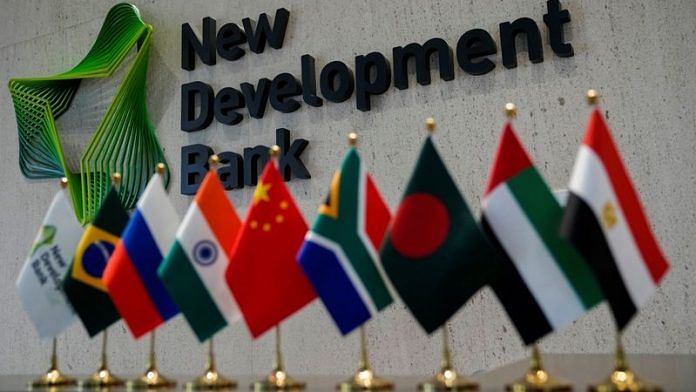The New Development Bank, established by BRICS member states to finance infrastructure and sustainable development projects, already has three non-member states: Bangladesh, the United Arab Emirates, and Egypt. The upcoming meeting will likely consider granting membership to Saudi Arabia, the largest economy among Arab countries, which is eager to diversify its economy. In addition to Saudi Arabia’s proposal, the BRICS must also address membership requests from over 20 other countries.
Two noteworthy aspects of BRICS are worth noting. First, there is a growing demand from countries to join BRICS and gain access to the funds available in the NDB. The process of admitting new members is closely linked to geopolitical changes and debates on de-dollarisation. Prospective members like Saudi Arabia, Turkey, and Iran are increasingly gravitating toward India, China, and Russia for trade and energy deals while distancing themselves from the US-EU axis. This shift could weaken American hold over emerging economies and middle powers, potentially impacting the emerging new world order based on multilateralism.
The second aspect involves ongoing discussions about the need to introduce a BRICS currency. Although admitting new members will eventually be allowed, implementing a common currency is not straightforward. Determining the currency’s value will be a challenge, but there are ways to overcome this hurdle. The Asian Clearing Union (ACU) already serves as “a payment arrangement” for intra-regional transactions among participating central banks, facilitating payments and promoting trade and banking relations.
The ACU, along with the Special Drawing Rights (SDR) system, already functions as a payment settlement methodology in international trade. If BRICS and the NDB decide to transition to a digital currency, it would not take much time to delink international trade from dollar parity. However, before de-dollarisation of BRICS can occur, India must secure a place in the IMF’s basket of world currencies, where the Chinese Renminbi is already included. Nevertheless, China is not currently prepared to replace the dollar with the Yuan.
To strengthen the rupee, India needs a robust manufacturing sector and an economic engagement policy similar to the Belt and Road Initiative (BRI). The current 306 Line of Credit (LOC) projects, valued at approximately $31 billion, pale in comparison to the nearly 2,631 BRI projects worth about $3.7 trillion (or possibly over 3,000 projects worth more than $4 trillion, according to another estimate).
India needs to strategise
As far as India’s Line of Credit (LOC) projects are concerned, the country borrows from international financial agencies and subsidises the interest component while advancing the loan to recipients. India will have to explore the possibility of linking all such LOC projects, project exports and even private sector projects to NDB funding. The NDB’s estimated exposure in China’s BRI projects is to the tune of $1.261 billion.
Again, approximately one third of the Asian Infrastructure Investment Bank (AIIB) loans are funding China’s BRI projects as AIIB was specifically established to support the BRI. Incidentally, though India is not part of any of the BRI projects, it supports the AIIB, where China owns 30 percent of voting shares and veto powers, which has approved 147 projects in India totalling $28.9 billion. This includes $3 billion currency swaps, loan deferments and line of credit to Colombo, and $15.8 million grant to Maldives for the construction of radar systems. India’s share of financial assistance and alternative projects to immediate and distant neighbours will increase substantially if we are able to find low interest finance partners.
While India should strategise to increase its infrastructure development projects in the neighbourhood, it should utilise the NDB route for funding and gradually delink its own projects from AIIB. Also, unlike in the case of AIIB, it is important to keep any one country from holding major shareholding in NDB and possess veto power.
Although the share of G7 in global GDP on PPP base was far greater compared to that of the BRICS countries, post-pandemic, the BRICS seems to have made a quantum jump. Interestingly, while the share of GDP of G7 nations based on PPP reduced from 50.42% of the world’s GDP in 1982 to 30.39% in 2022, the share of GDP of BRICS nations increased from 10.66% in 1982 to 31.59% in 2022. The share of India’s GDP in world’s GDP increased from 2.98% in 1982 to 7.21% in 2022.
As one of the fastest growing economies not only among the BRICS countries but also among G20 nations, India has a substantial role to play and manage its economy more seriously and responsibly. With probably more than thirty countries as members of BRICS+ and more members in NDB, India has a pivotal role to play in this regional group which, like South South Cooperation, may surpass regional boundaries and emerge as a global financial agency with greater geopolitical clout.
Seshadri Chari is the former editor of ‘Organiser’. He tweets @seshadrichari. Views are personal.
(Edited by Prashant)



